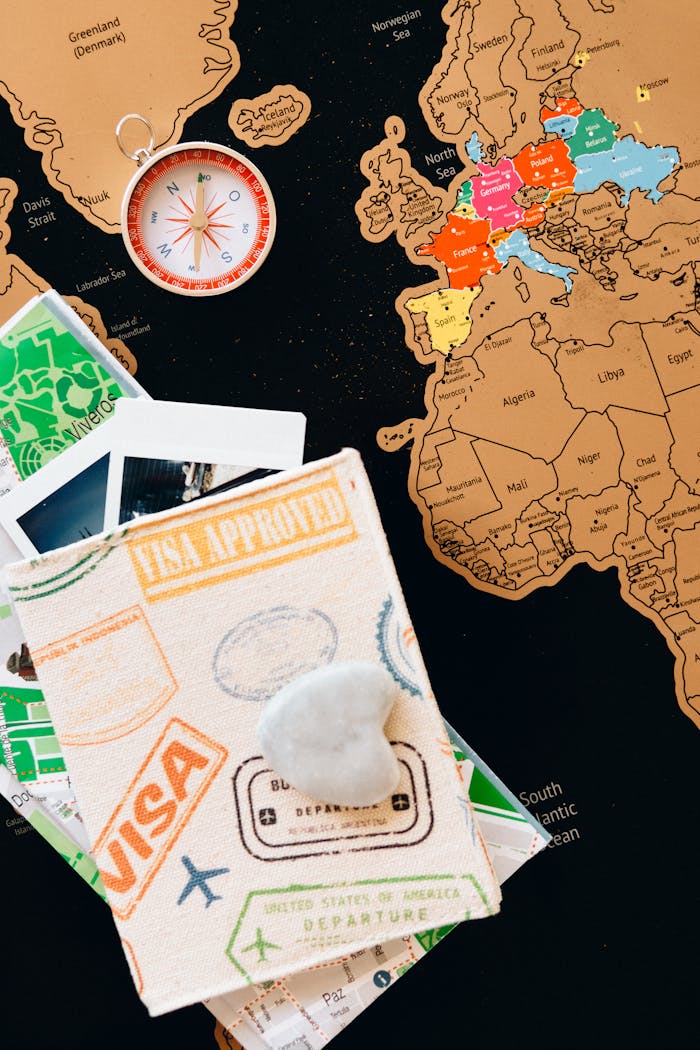In a world where borders are both physical and emotional, understanding the essence of home and identity becomes crucial for every emigrant. This blog explores how one’s identity evolves in a new country, focusing on the distinct stages of emigration: deciding to move, embarking on the journey, arriving in the new country, forming initial connections, and ultimately feeling at home.
Deciding to Move
The decision to emigrate is influenced by economic opportunities, political stability, and personal aspirations. Emotional and practical triggers, especially those that are highly emotional, can accelerate this decision-making process (Migration Policy Institute, 2023; General Medical Council, 2021). At this juncture, individuals carefully evaluate the potential benefits of moving against the emotional and practical challenges of leaving their familiar surroundings (Reitz, 2015; IOM, 2018).
Consider Asiyeh, who decided to move from India to the United Kingdom in search of higher education and better career opportunities. For Asiyeh, this stage involved extensive research and emotional preparation as she contemplated leaving the bustling streets of Mumbai, filled with the sounds and smells of her youth.
Embarking on the Journey
The migration journey is marked by a mix of anticipation and anxiety as individuals leave behind familiar environments and face uncertainties in a new land (Deperio, 2019). This phase is filled with logistical planning, such as securing visas, finding a place to live, and making travel arrangements. It is also a period of emotional transition, as individuals say goodbye to familiar surroundings and prepare for the unknown (Cohn and Morin, 2008).
For Ahmad, moving from Pakistan to the United States meant navigating a complex immigration process and dealing with the mixed emotions of leaving his extended family and his profession as an engineer behind.
Arriving in the New Country
Upon arrival, migrants often experience an initial shock that can lead to disorientation and homesickness. This adjustment process can be likened to the stages of grief—denial, anger, bargaining, depression, and acceptance—as they adapt to their new surroundings (Deperio, 2019). The arrival marks a significant milestone, involving initial settling in, finding accommodation, navigating new systems, and beginning to explore the new environment (Bichler et al., 2020).
Asiyeh’s arrival in the United Kingdom was both exciting and overwhelming. While she faced feelings of loneliness and cultural disconnect, engaging with community groups and local culture helped her build a support network and start feeling more at home.
Technology Security: Emphasizing data as a crucial element for production and political control, recent laws aim to secure data locally and protect intellectual property from foreign access.
Forming Initial Connections
Building new social networks is crucial for migrants to feel a sense of belonging. This involves forming connections with fellow immigrants, local communities, and institutions and is influenced by cultural background, language fluency, and the receptiveness of the host community (Psychology Today, 2023; Migration Policy Institute, 2023). As emigrants start to settle in, they begin to navigate a dual identity, balancing the heritage of their homeland with the norms of their adopted country (Berry, 1997; Bhugra and Becker, 2005).
Ahmad, who had to rebuild his social and professional identity in the United States, found that integrating aspects of both Pakistani and American cultures enriched his sense of self, despite the challenges.
Ultimately Feeling at Home
Feeling at home in a new country is a gradual process that involves creating new routines, forming emotional bonds, and reconciling one’s identity with the new environment. Migrants often maintain connections with their home country while building a new life, leading to a transnational identity that encompasses elements of both the home and host cultures (Psychology Today, 2023; Migration Policy Institute, 2023).
For Asiyeh, London gradually became home as she established new routines, formed friendships, and found places that brought her comfort and joy, much like her memories of Mumbai.
These stages highlight the multifaceted nature of migration and the resilience required to navigate this transformative journey. Understanding these phases can help in developing policies and support systems to facilitate smoother transitions for migrants.
Policy Recommendations
To better support migrants and facilitate their integration into a new country, several policy recommendations can be proposed. These recommendations focus on enhancing pre-migration support, streamlining the migration process, and providing robust post-arrival services.
Firstly, it is crucial to enhance pre-migration support by providing comprehensive information about the host country, including cultural norms, legal rights, and available resources. This support should also include emotional and practical preparation programs to help potential migrants understand and prepare for the significant changes they will face (Migration Policy Institute, 2023; General Medical Council, 2021).
Streamlining the migration process by simplifying visa and immigration procedures can significantly reduce anxiety and uncertainty for migrants. Clear guidance on securing visas, finding accommodation, and making travel arrangements is essential for easing the transition (Deperio, 2019). Upon arrival, establishing welcome centers to offer orientation, accommodation assistance, and initial integration support can be immensely beneficial. Additionally, providing immediate access to mental health services can help migrants manage the initial shock, disorientation, and homesickness they might experience (Bichler et al., 2020).
Community integration initiatives are equally vital. Connecting new migrants with local community groups and fellow immigrants, and promoting cultural exchange programs can foster mutual understanding and receptiveness between migrants and the host community (Psychology Today, 2023; Berry, 1997). Language and cultural training programs, including language classes and cultural orientation sessions, are necessary to help migrants overcome language barriers and integrate effectively. Encouraging host communities to learn about migrants’ cultural backgrounds can create a more inclusive and welcoming environment (Reitz, 2015).
Ongoing support and counseling are essential for helping migrants navigate new systems and establish new routines. Long-term support systems should offer counseling and platforms for migrants to share experiences and seek advice (Bhugra and Becker, 2005). Employment and professional integration programs should assist migrants in finding jobs and recognizing their qualifications from their home countries. Mentorship and networking opportunities can help migrants rebuild their professional identities and advance their careers in the host country (Cohn and Morin, 2008).
Furthermore, establishing an organization comprised of emigrants who have experienced similar journeys and are now experts in their host country can be highly beneficial. These individuals, who share the same background and culture as the new migrants, can provide invaluable advice and support. They understand the migration process intimately and can offer guidance that is both practical and empathetic, matching their experiences with those of new migrants. This policy could also enable the host country to align the focus and integration of new arrivals with its own strategic plans and objectives, ensuring that the skills and contributions of migrants are effectively utilized for mutual benefit.
Finally, regularly assessing the effectiveness of migration policies and support programs through feedback from migrants is crucial. Policies should be adjusted based on the evolving needs of migrants to ensure successful integration and well-being (IOM, 2018). By addressing these areas and leveraging the expertise of former migrants, a more supportive environment for new migrants can be created, helping them navigate the complex journey of migration and ultimately feel at home in their new country.
- References:
- Berry, J. W. (1997). Immigration, acculturation, and adaptation. Applied Psychology, 46(1), 5-34.
- Bhugra, D., & Becker, M. A. (2005). Migration, cultural bereavement, and cultural identity. World Psychiatry, 4(1), 18-24.
- Bichler, S., Albert, I., Barros, S., & Murdock, E. (2020). Exploring cultural identity in a multicultural context – The special case of Luxembourg. Human Arenas, 3, 310-330.
- Cohn, D., & Morin, R. (2008). Who Moves? Who Stays Put? Where’s Home? Retrieved from: Pew Research Center.
- Deperio, D. (2019). Embracing the Change: Life in the United States. WES Advisor Blog. Retrieved from WES Advisor Blog.
- International Organization for Migration (IOM). (2018). World Migration Report 2018. Geneva: IOM.
- Migration Policy Institute. (2023). Transnational Migrants: When “Home” Means More Than One Country. Retrieved from Migration Policy Institute.
- Psychology Today. (2023). How Immigrants Perceive Home and Identity. Retrieved from Psychology Today.
- Reitz, J. G. (2015). Cultural distance and emotional problems among immigrant and refugee youth in Canada: Findings from the New Canadian Child and Youth Study (NCCYS). International Journal of Intercultural Relations, 49, 33-45.
Table of Contents
Toggle


